Tracing the migration of the Prophet Muhammed, 400km from Mecca to Medina in 8 days, the Ithra Museum brings the foundational story of Islam to life in this spectacular exhibition, ‘Hijrah: In the Footsteps of the Prophet’. Coalescing historical artefacts, works of contemporary art and scholarly commentary brings the all-embracing themes of love, friendship, and freedom to the fore.
The focus on these universal themes in the Prophet’s journey and their continued relevance to the modern world is executed by spotlighting the Prophet, his companions and the landscape. It is in the steadfast character and unwavering devotion of this coterie that we learn about courage and temperance; and it is in the very rocks, sun and stars of the landscape that we gauge the power of nature and the spiritual connection of humanity to the land. The combination of art, religion and history creates a mesmerising portrait of a world that is simultaneously distinct and inseparable from the arbitrary distinctions between religion and culture or society and the individual. The use of immersive experiences, original historical artefacts, contemporary artworks, and wall texts convene to create a living, breathing sense of the Prophet’s purpose.
The concept of the exhibition revolves around the understanding that pre-Islamic Mecca was a harsh and unjust place, which the Prophet sought to return to its monotheistic roots. But, under threat of assassination, he was forced to flee. The resulting voyage – the Hijrah, or migration – led, in 622 CE, to the Constitution of Medina, marking the birth of Islam. The exhibition takes us in the footsteps of the Prophet, charting his journey one day at a time, creating a sense of not only the mammoth task they undertook but also its immense significance.
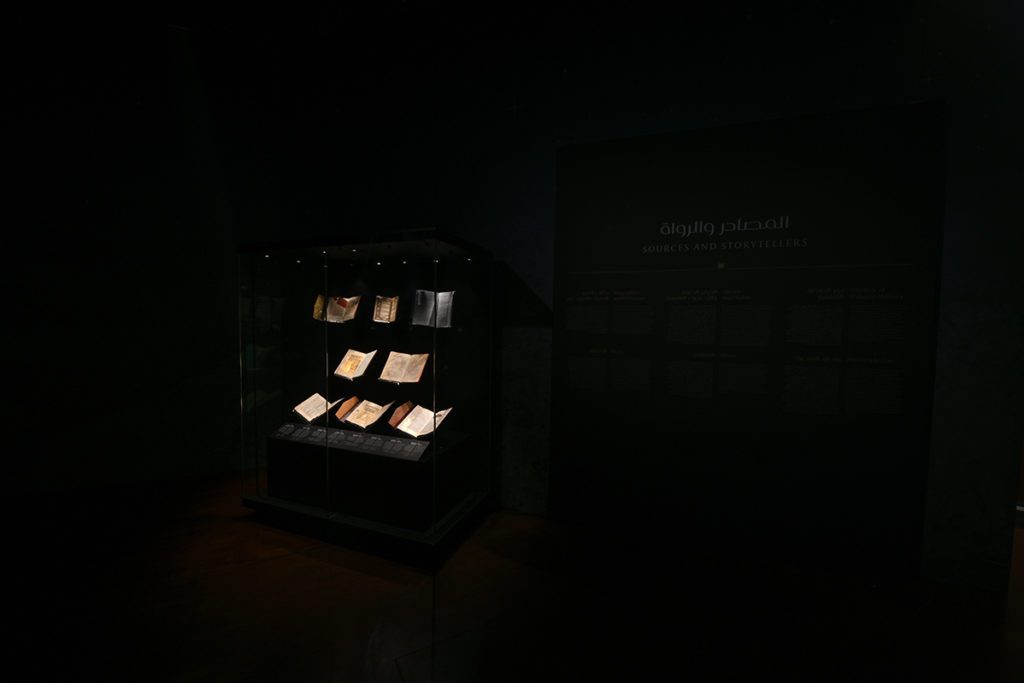
A major draw is the prospect of never before seen artefacts on show. In the first room, a cabinet containing coins, totems and statues offers a glimpse into the lives of the people whom the Prophet lived amongst. The room is dark, lit only by white spotlights. The mood is somber, serious and transports us to an unimaginable age. A Funerary Stele, borrowed from the National Museum, Riyadh, bears an inscription in Aramaic, ‘In memory of Taym, son of Zayd’ from the 5th or 6th Century. A 2nd Century Figurine of a Dromedary Carrying Jars and a 1st Century Zoomorphic Weight in bronze set the context of the Quaraish tribe who inhabited the land and who, ultimately, drove the Prophet to his calling. In the presence of these artefacts the viewer becomes imbued with the sense that this is about more than religion – it is about humanity and history which still breathes through these stones. It is a transformative moment to see these stones and, elsewhere in the show, the finely crafted rugs that once hung above the entrance to the Prophet’s tomb; in a sense, they locate the religious significance of the Hijrah in grounded, human story that transcends spiritual provocations. That is not to say that history is here effacing religion – it is there for anybody to see and feel – but that the exhibition has been curated in such a way as to appeal to all who are interested in the history of peoples, regardless of their faith. The Prophet himself is immortalised in a beautiful 17th Century book of poetry by Turkish poet, Mehmet Hakani, which describes his features in detail. The purposeful, undulating lines of Arabic script on these pages is a work of art in itself and never ceases to inspire.
Among the contemporary works commissioned for the show is Moroccan artist, Younes Rahmoun’s House-Boat (2019). Suspended from a painted metal frame that soars into the triple-height ceiling of the Great Hall exhibition space, the bronze boat brings forth the Hijrah’s universal themes of home, safety, travel, and companionship. Rahmoun explains the work as concerning location and dislocation, as home is the place we carry within us rather than a physical location – the boat is a migratory structure that enables us to dwell as at home, as Heidegger might put it – recalling the old adage, ‘home is where the heart is.’ Furthermore, he says of the work that it swings like a pendulum, counting time without actually moving anywhere. The imposing scale of the structure with its criss-cross of bars like a climbing frame and the almost luminous surface glow of the copper boat within make for an impressive gesture, but the juxtaposition between the towering frame and the comparatively dainty boat within forces the viewer to search the skies for the point of the piece, thus diminishing some of the effect promised by its initial appearance. It is, by a wide margin, the most contemporary-looking piece in the show and, for that reason, it rather too self-consciously attempts to link its themes of placement and displacement into the overall context of the Hijrah.

London-based artist, Ayesha Amjad has created Memory Map (2021), an intensely intricate painting in handmade ink and 24 karat gold that offers a personal reflection on learning of the Hijrah as a child, which resides deep in the consciousness of Islam the world over. Amjad’s work is unique in that is a personal testament to a universal history that unfolds layers of learning and memory. Aesthetically, it chimes with the historic artefacts: the soothing tones of the colour pallet, the undulating lines of script and the bronzed surface of the paper subtly reflect and embody the lineage of documentation on the Hijrah. It is a seamless transition from past to present, which sits alongside the books of Turkish poetry and acane maps. The Prophet’s route is marked by roses, glowing red against the golden sands of the landscape, which brings some much-needed colour.
Aside from artefacts and artworks, the story is narrated through immersive video installations. In one film, renowned Hijrah scholar Dr Abdullah Alkadi, explains how, over the course of 30 years, he has pieced together the exact route of the Prophet’s journey. These videos are intense in the exacting precision with which he reconstructs the journey and really need to be watched from start to finish. In fact, Alkadi’s commentary is so mesmerising in its detail that it usurps the wall texts and purely visual video installations that attempt the same feat. A central theme of the show is to explore how the Hijrah is, above all else, a story of love and companionship: a recreation of the cave in which the Prophet and his companions hid from those who chased them and a life-size model of the camel, Qaswaa, envelop the viewer in a profound meditation on friendship.
The achievement of ‘Hijrah: In the Footsteps of the Prophet’ is the way it treats the story of the Hijrah as a multifaceted phenomenon. It is about the birth of Islam and the Prophet’s journey, but it is also a meticulous, painstaking historic survey; it is a celebration of art and culture that the Hijrah has inspired. But above all, it is a reflection on the universality of love, friendship and freedom that inspires us to ponder how we – whoever we are, wherever we are – are not so different from the people whose trials and tribulations that unfolded in the 8-day journey of the Hijrah and whose presence can still be felt everywhere today.
‘Hijrah: In the Footsteps of the Prophet’ is on at Ithra Museum, Dhahran, Saudi Arabia until 30th April 2023.
Visitors to Saudi Arabia are advised that there are social and legal norms in place that may limit many freedoms and activities that unmarried couples, single women and the LGBTQ+ community hold in countries such as the United States and the UK.
Gov.uk Foreign travel advice warns against participating or attending public demonstrations. ‘Public demonstrations are illegal in Saudi Arabia. Follow local media and be alert to local and regional developments which might trigger public disturbances. You should avoid protests or demonstrations. Despite warnings issued by the authorities, demonstrations do take place from time to time, mainly in the Shia communities in the Qatif area of Eastern Province, including Al Musawara village in Al-Awamiya, and Al Hasa. Violent clashes have occurred between demonstrators and security forces.’
Bloggers and journalists are also advised to exercise caution as they may be targets for violent elements within Saudi society or jailed for extended periods of time.
Featured Image: Installation View, Hirah: In the Footsteps of the Prophet, Ithra, 2022.
This article has been supported by Ithra Museum & Flint Culture
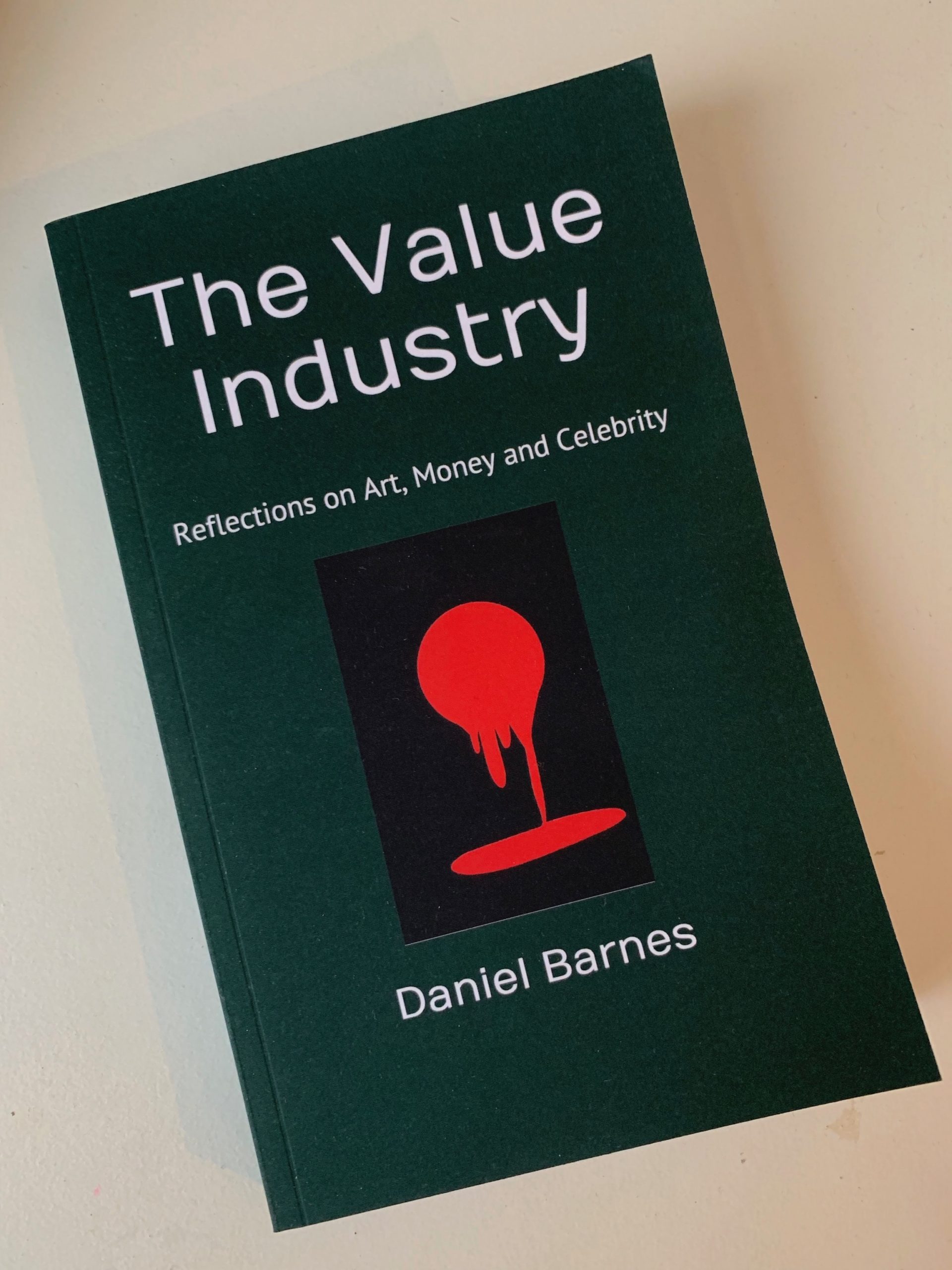
I have worked as a lecturer, teacher, bookshop manager, gallery invigilator, curator and freelance writer, for the most part simultaneously, which exemplifies a lifelong passion for art, culture and ideas. I was born on the Isle of Wight in the very year that both Jean Baudrillard’s Simulacra and Simulation and Arthur Danto’s The Transfiguration of the Commonplace were published.

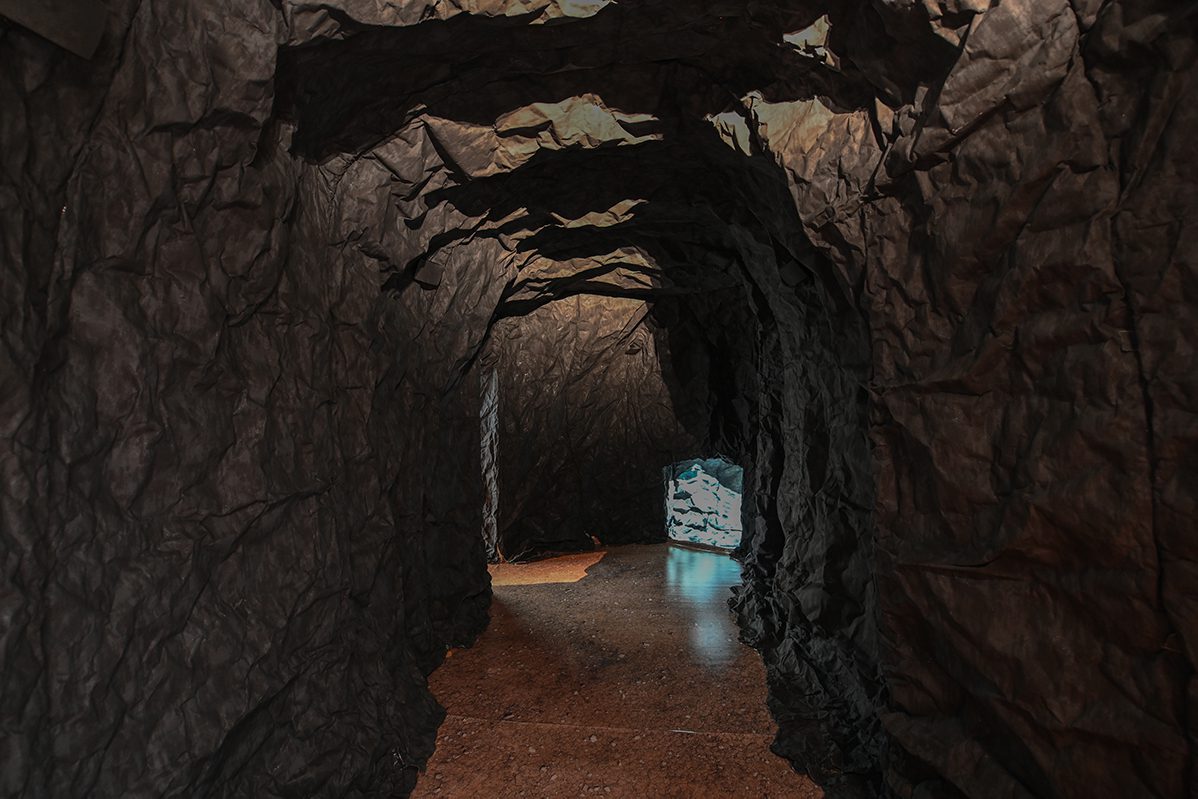








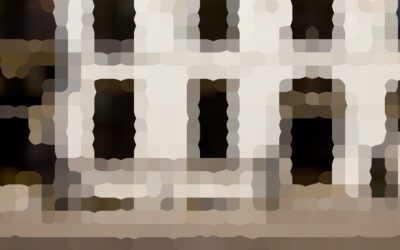
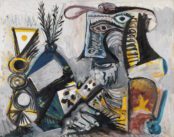








![L'Esprit comique [Der komische Geist], René Magritte, 1928. Courtesy Sammlung Ulla und Heiner Pietzsch, Berlin © 2025, ProLitteris, Zurich Photo Credit: Jochen Littkemann, Berlin](https://b276103.smushcdn.com/276103/wp-content/uploads/2025/07/ew11_0098489_2025-05-12_web-140x174.jpg?lossy=1&strip=0&webp=1)

